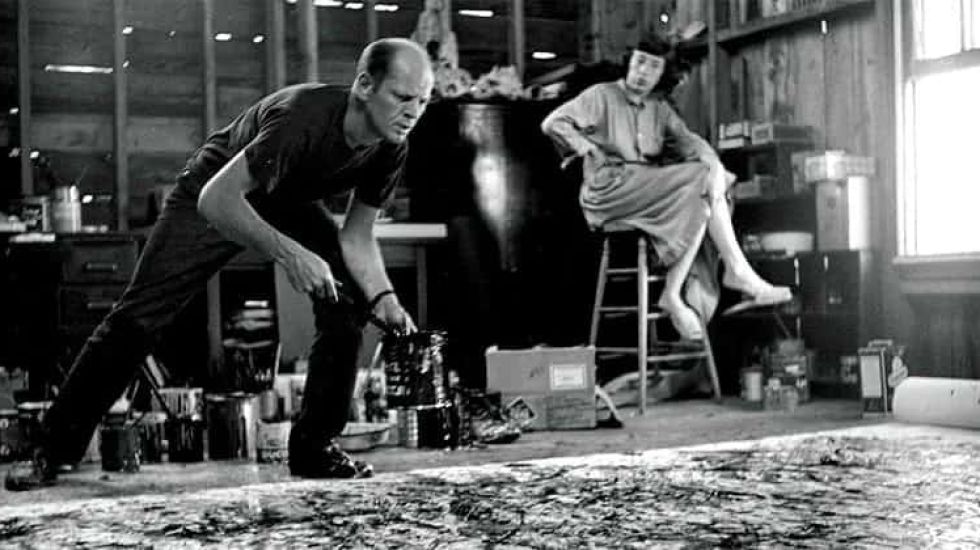He achieved considerable fame and recognition during his life, but ultimately, his life would begin to mirror the chaotic paintings he created so passionately.
Jackson Pollock’s Early life
Pollock was born the youngest of five brothers in 1912 and spent most of his youth in Arizona and California. His family encouraged his interest in art from an early age, especially his oldest brother Charles, who was also an artist. As a teenager, Pollock enrolled in the Manual Art High School in Los Angeles, but was soon expelled for starting fights with the other students. At eighteen, Pollock moved to New York City to live with Charles and study under Charles’s instructor, Thomas Hart Benton.
Like many artists living in the Depression era, Pollock took advantage of the Public Work of Art Project– a portion of Roosevelt’s New Deal – which allowed artists to work for $25 a week producing art. The project enabled him to produce scores of pieces of art, but it also served to fund his alcoholism – a problem he sought treatment for in 1937.
After completing his treatment, Pollock met contemporary artist Lee Krasner and the two quickly developed a romantic interest. They were married in 1945 and purchased a home in Long Island, with a barn converted into a studio for Pollock to craft his large murals.
His unique paintings had gained the attention of noted socialite and art collector Peggy Guggenheim, who commissioned him to create Mural (1943) for her townhouse. She would later offer him a contract that allowed him to perfect his drip technique in his private studio.
Pollock and the drip technique
Unlike most artists who painted in front of an easel, Pollock preferred to set his canvases on the floor, so he could walk around them and view them from above while he worked. Inspired by Indian sand-painting, Pollock began dripping and splattering the paint onto the canvas using brushes, sticks, turkey basters, and even his own hands and body at times.
Those lucky enough to watch him work described his techniques as dance-like, he moved around the canvas applying paint in fluid strokes. In some cases, Pollock would add other elements such as sand or glass to his pieces to enhance the texture.
Many of his contemporaries criticized the seemingly random nature of his technique, but Pollock insisted he always had a vision for the piece while he was painting. Possibly as a reaction to critics and to dissuade viewers from attaching their own preconceived symbolism to his paintings, he ceased to give his paintings meaningful titles and instead resorted to numbers followed by a year, like in his most famous painting No. 5, 1948.
Later life and death – The sad Pollock story
After Pollock was featured in an issue of Life magazine in 1949, his fame and notoriety soared.
His paintings frequently sold out at private exhibitions, and he was heralded by many as the greatest living artist. Despite his success, he was also deeply affected by critics who claimed he was a fraud. He soon returned to drinking heavily and the mood of his pieces became notably darker in color and tone. He transitioned to painting in black and white briefly, which proved unpopular but did not diminish demand for his work.
His drinking, combined with pressure from the public, took a toll on his marriage and his art. He stopped painting in 1956 and grew distant from his wife, who traveled to Paris without him that summer. Shortly after, on August 11, 1956, Pollock crashed his car into a tree near his home while intoxicated and traveling with two passengers, only one of whom survived. The artist was thrown from the car and died instantly.
After Pollock’s death, Krasner continued to live in their home in Long Island, adopting Pollock’s barn studio for her own paintings. She managed the sale of his remaining artwork and did her best to ensure his legacy remained a positive one. Before her death in 1984, she founded the Pollock-Krasner Foundation, which provides grants to young artists.
Real of fake Polllock?
Due to both his immense popularity and his unique style, Pollock had no shortage of imitators both during his life and after his death. As a result, the authenticity of his paintings has come into question on numerous occasions. In 2006, a documentary titled “Who the #$&% is Jackson Pollock?” premiered, following seven-three year – old truck driver Teri Horton, who purchased a painting for $5 at a thrift store that some art experts believe may be an authentic Pollock.
The painting is unsigned; however, forensic evidence revealed fingerprints matching Pollock’s, as well as other indications of its authenticity. Horton has received several offers for her painting – one exceeding 9 million – but she refuses to sell it for anything less than $50 million.
5 Pollock Best-sellers
1) Number 17A, 1948 – sold for $200 million, September 2015
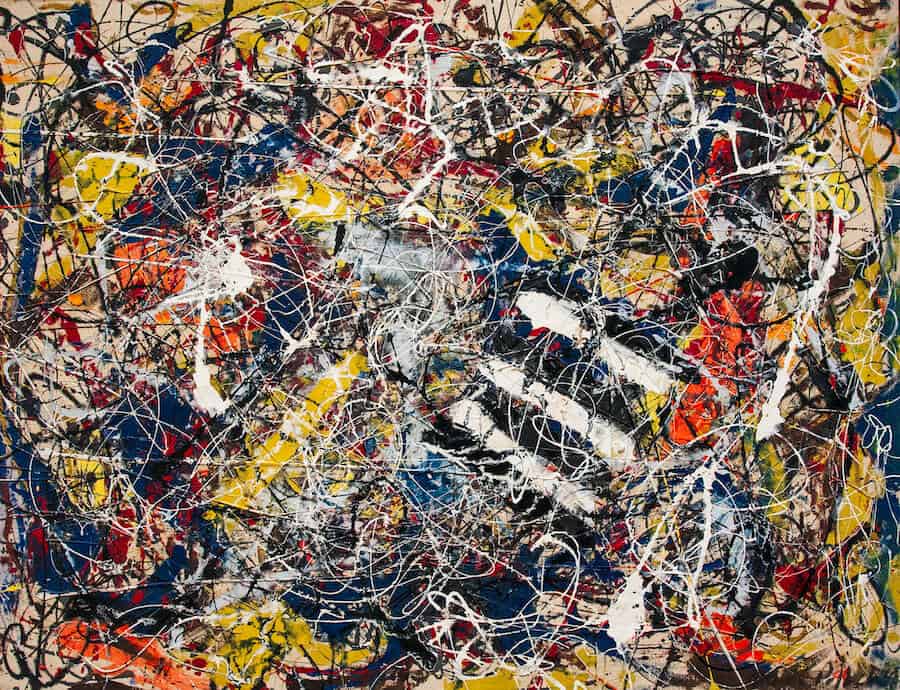
Jackson Pollock, Painting Number 17A - 1948
In September 2015, entertainment magnate David Geffen sold Number 17A, 1948 to billionaire American hedge fund manager Kenneth C. Griffin for $200 million, a record-breaking sum.
Pollock's 44 x 34-inch oil on fiberboard Number 17A, 1948, is vivid and colorful. It has vast sections of red, yellow, and blue intertwined within layers of black and white, and unusually for his drip paintings, three diagonal white lines run through the center.
After a four-page spread in Life magazine in August 1949, Number 17A launched Jackson Pollock's career, which may have contributed to its high sale price.
2) Number 5, 1948 – sold for $140 million, May 2006
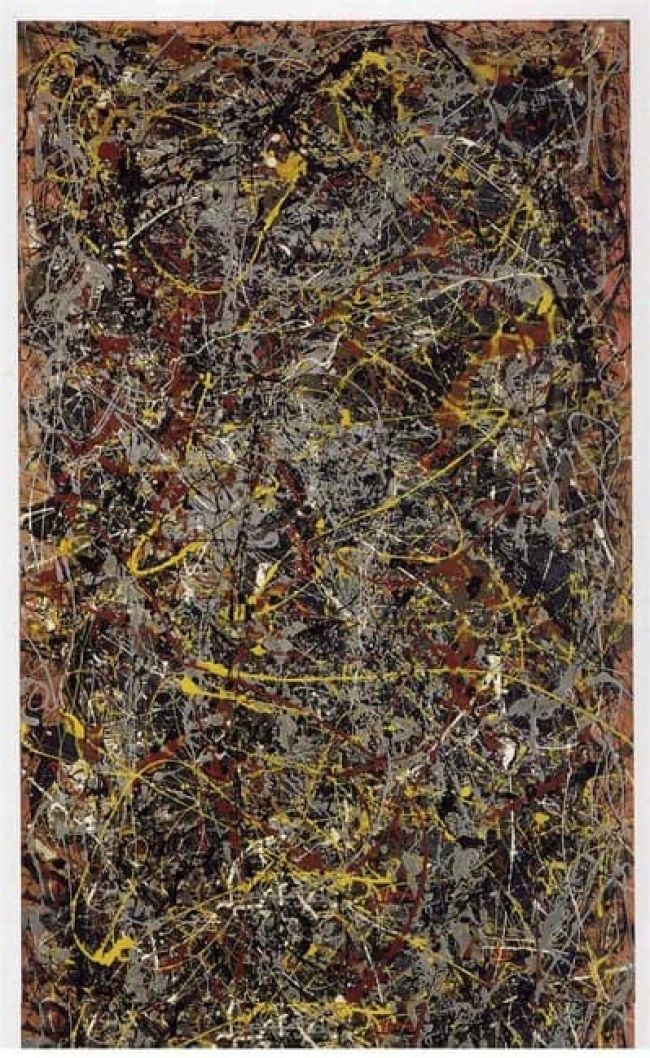
On 22 May 2006, Jackson Pollock's Number 5 sold privately for the highest price ever paid for a painting. It retained this championship for 5 years until April 2011.
No.5, an 8 by 4 foot painting, was painted on fiberboard with liquid synthetic resin paints (classified as oil paint). It has deep yellow, brown, white, and gray layers.
No. 5 has an intriguing genesis story. It was claimed to have been handled rough after being painted in 1948. Jackson Pollock painted over the damage, but after selling it for $1,500 in early 1949, some of the paint peeled off, prompting him to recreate the whole thing! Happily, its new owner loved the result even more.
3) Number 17, 1951 – sold for $61.1 million, November 2021
This square painting from Pollock's final collection of black enamel paintings from 1951 to 1952 sold for $61.2 million at Sotheby's in November 2021. Number 17, 1951, like with the rest of this series, is painted with black enamel paint on canvas and measures 148.6 x 148.6cm.
Many in the art world saw Number 17, 1951 as a return to Pollock's figure-based painting and a departure from his densely layered, ‘all over’ drip painting. Its selling set a Jackson Pollock painting auction record at the time.
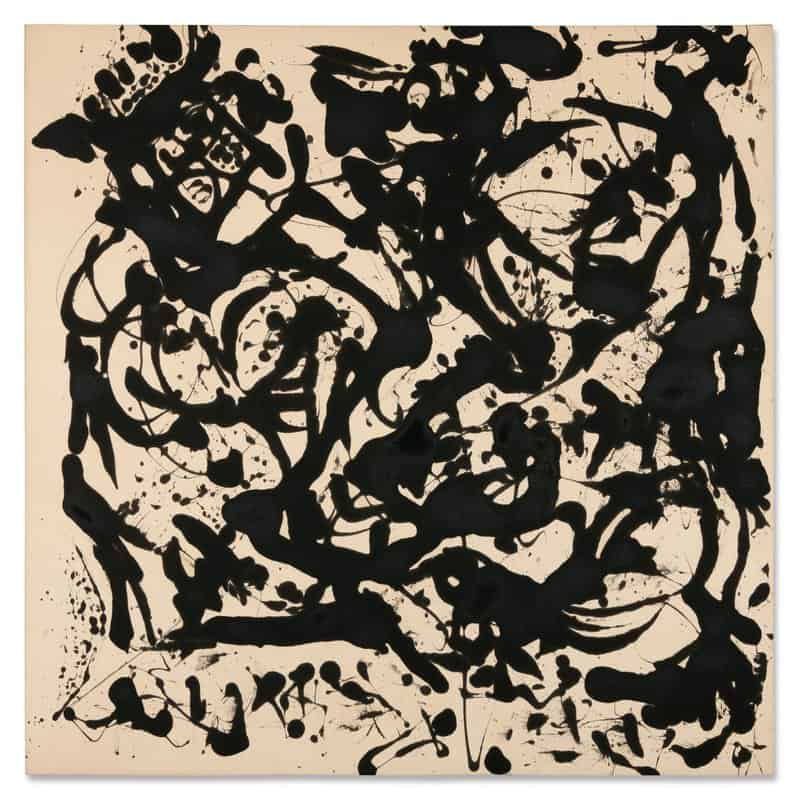
Jackson Pollock Number 17 1951
4) Number 31, 1949 – sold for $54.2 million, Christie’s May 2022
In May 2022, Christie's auctioned the 31 by 22-inch, vividly colored Number 31, 1949 for $54.2 million. Numerous Pollock paintings include a turquoise, red, yellow, and green color scheme set against black, white, and gray. Number 31, 1949 was painted with oil, enamel, and aluminum paint and gesso on paper mounted on Masonite.
After 20 years with an unidentified US collector, number 31, 1949 was sold in 2022.
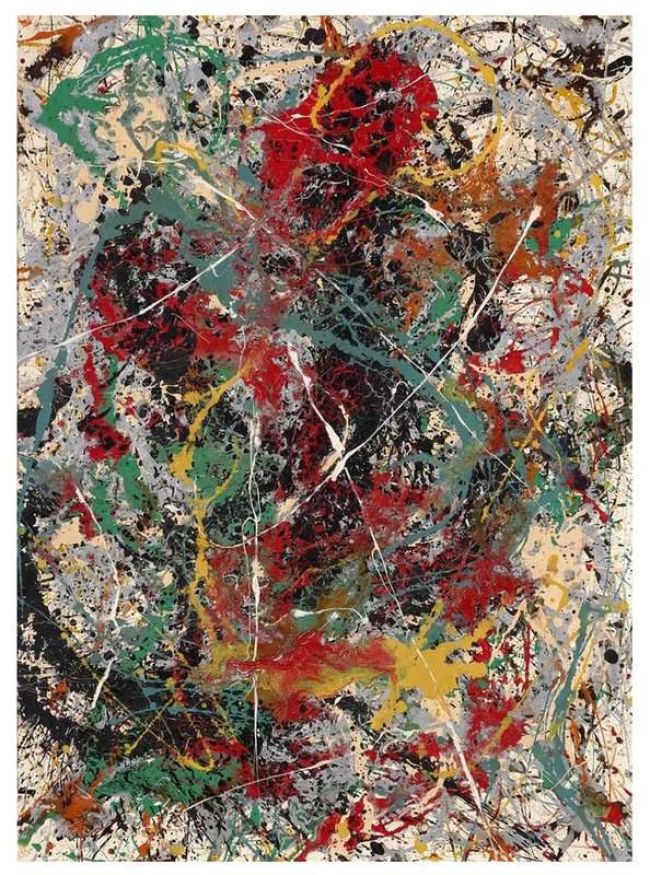
5) Red Composition, 1946 – sold for $12 million, October 2020
This Pollock piece sold for $12 million at Christie's in New York in October 2020 to fund the Everson Museum in Syracuse, New York's art collection diversification.
Red Composition, one of Jackson Pollock's first drip paintings, was painted in 1946 using oil on Masonite. It is also one of his smallest, measuring 48.3 x 60.3cm. It shows his paint-pouring technique evolving, as it is looser and less dense than his later drip-painted paintings.
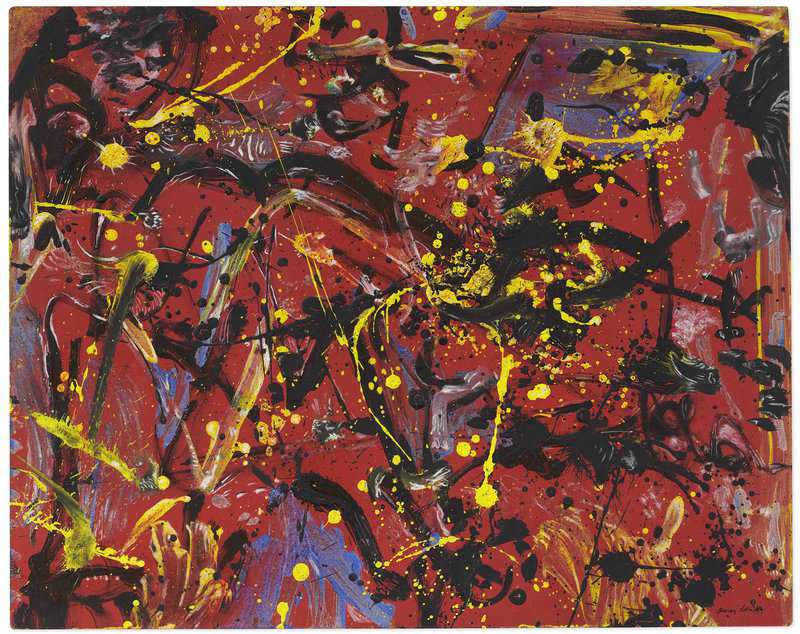
Jackson Pollock Red Composition 1946
